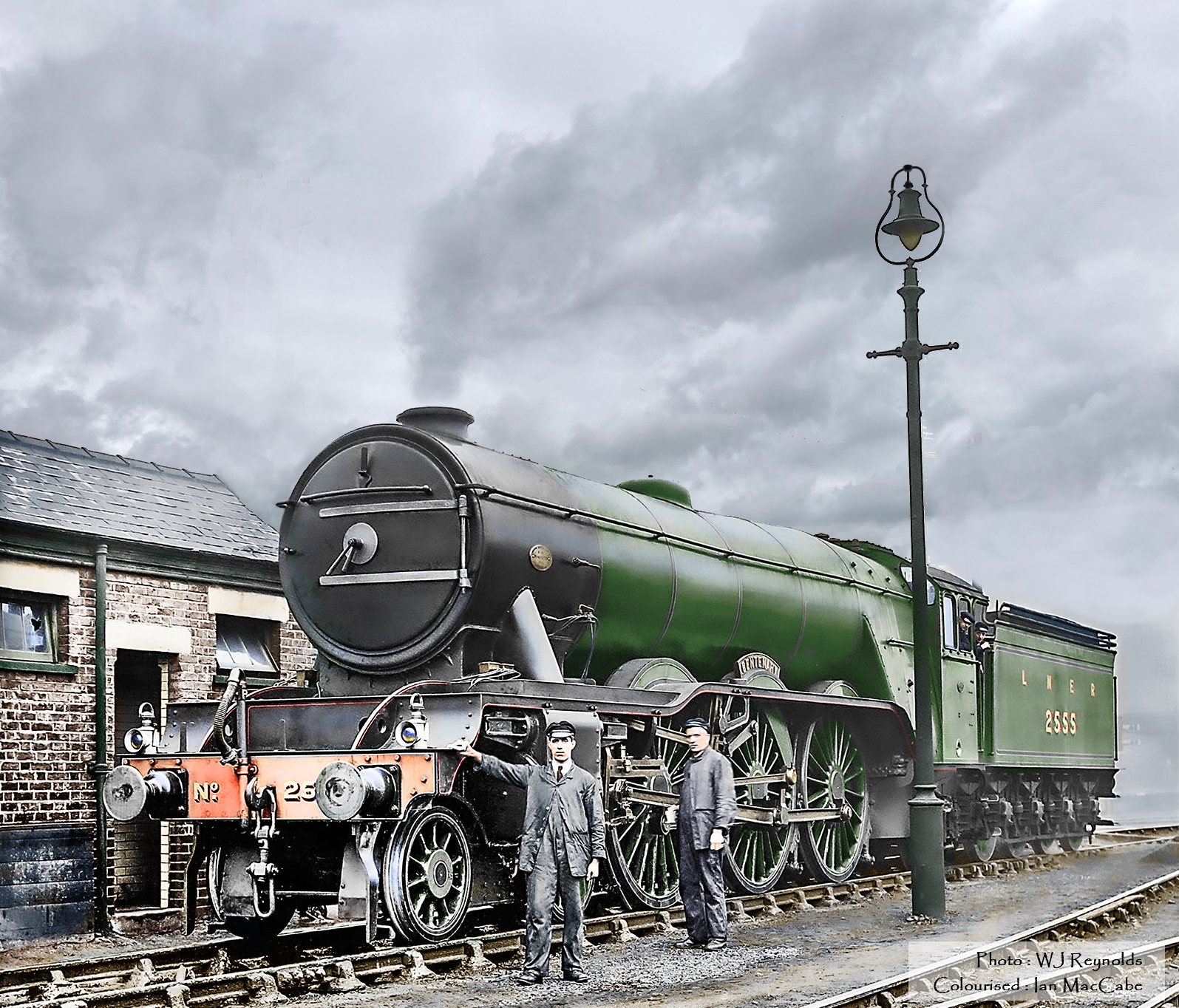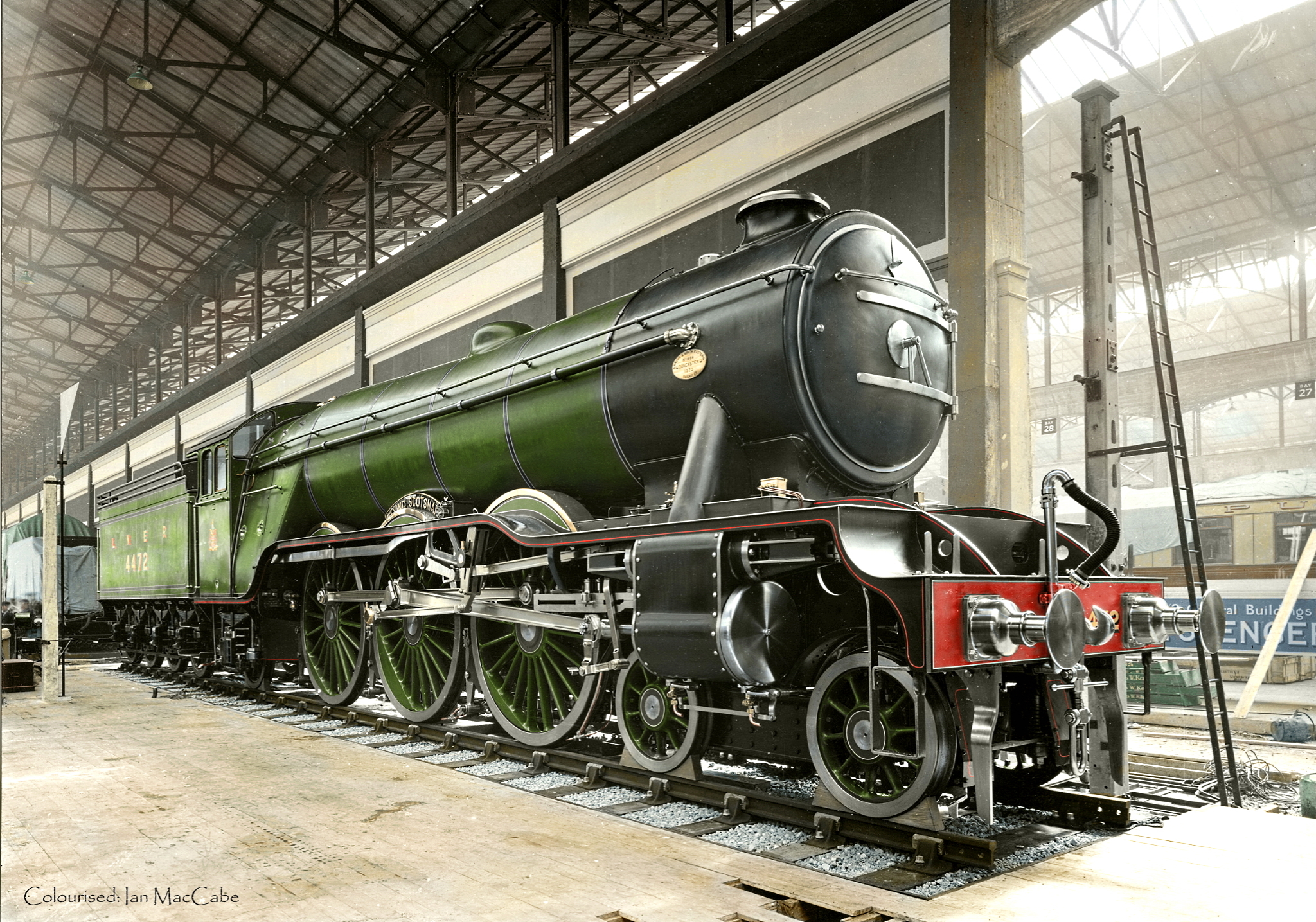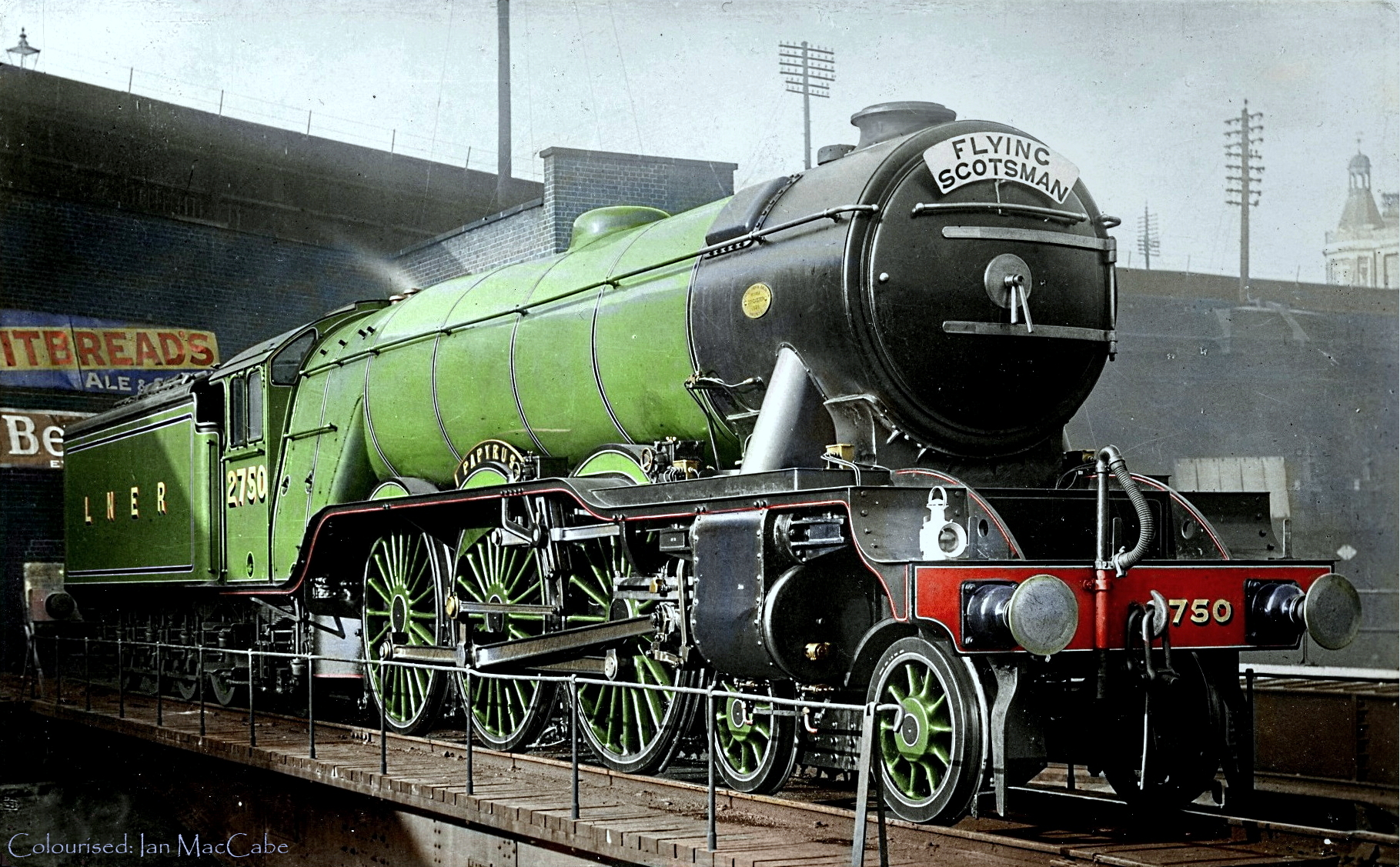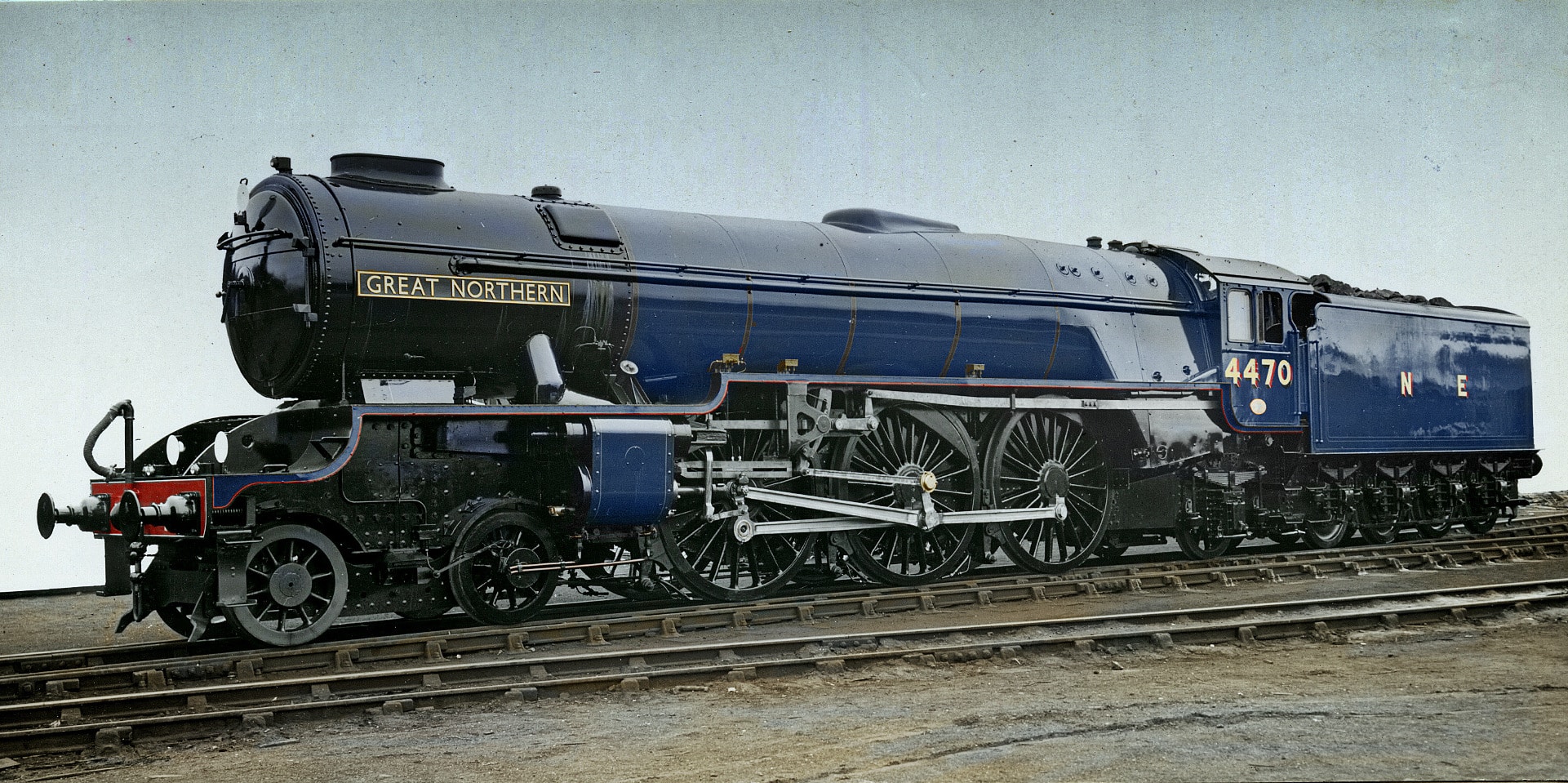Your cart is currently empty!
Sir Nigel Gresley
Sustaining the legacy

Class A1/A3
The London and North Eastern Railway class A1 and class A3 were 4-6-2 Pacific steam locomotives designed in 1922 for the Great Northern Railway by Nigel Gresley for express passenger work.

The London and North Eastern Railway Gresley Classes A1 and A3 were 4-6-2 Pacific steam locomotives designed by Nigel Gresley for passenger work. The intention was to produce a locomotive able to handle, without assistance, mainline express services that were reaching the limits of the capacity of the Ivatt large-boilered Atlantics. The change in class designation from class A1 to class A3 reflected the fitting of a higher-pressure boiler with a greater superheating surface and a small reduction in cylinder diameter. Eventually all but one of the class A1 locomotives were rebuilt in this way, apart from No. 4470 which was completely rebuilt as a Thompson class A1/1.
The first two GNR Pacifics, No. 1470 Great Northern and No. 1471 Sir Frederick Banbury were introduced in 1922. The Great Northern board ordered a further ten ‘1470-class’ locomotives, which were under construction at Doncaster at the time of the formation of the LNER in 1923. This included the future sole surviving member of the class, No. 4472 Flying Scotsman, then nameless and numbered No. 1472.


Gresley was appointed Chief Mechanical Engineer of the LNER in 1923. Realising the need for standardisation, Gresley adopted his GNR Pacific design as the standard express passenger locomotive for the LNER main line. The choice was made after comparative trials with an equivalent North Eastern Railway (NER) class A2 Pacific. Between 1923 and 1925, 51 class A1 locomotives were built; twenty by the North British Locomotive Co., and the remainder by Doncaster Works.
In 1924, No. 4472 Flying Scotsman (renumbered and named for the occasion) was displayed at the British Empire Exhibition at Wembley along with the first member of the Great Western Railway (GWR) Castle Class, No. 4073 Caerphilly Castle. In the following months, the two railway companies ran comparative exchange trials between the two types.


The LNER learned valuable lessons from the trials which resulted in a series of modifications carried out from 1926 on No. 4477 Gay Crusader. Changes to the valve gear included increased lap and longer travel, transforming performance and economy. There followed a complete redesign of the valve gear, which was applied to No. 2555 Centenary in 1927, with the rest of the class being modified in due course. Another modification was made in 1927 when No. 4480 Enterprise was fitted with a 220psi boiler.
Fifteen (Nos. 2568–82) of the forty class A1s ordered by the LNER in 1923 had both Westinghouse and vacuum equipment for the train brakes, and on these the locomotive brakes were also Westinghouse. In 1928, the LNER decided to standardise on the vacuum brake, and the class A1s with Westinghouse brakes were converted to vacuum brakes between 1933 and 1935.


The outcome of the various experiments and modifications made to the class A1s in the late 1920s was a new class A3 “Super Pacific”, the first example of which was No. 2743 Felstead. This locomotive appeared in August 1928 with a 220psi boiler, 19in cylinders, increased superheat, long-travel valves, improved lubrication and modified weight distribution. Another new development was the changeover from right to left-hand drive, resulting in the modification of all earlier locomotives.
Twenty-seven class A3s were built from new, with little variation, except for a new type of boiler with a “banjo dome”, which was fitted to the last nine class A3s in 1935. Although all bar one of the original class A1 locomotives were eventually rebuilt to class A3s, it was a drawn-out process that lasted until 1949; No. 60068 Sir Visto was the last locomotive to be converted. The changeover to left-hand drive took longer, and continued into the 1950s.


Gresley continued to experiment on individual locomotives. ACFI feedwater heaters were installed in class A1 No. 2576 The White Knight and A3 No. 2580 Shotover. However, the increase in efficiency was deemed insufficient and the apparatus was eventually removed. In 1935, No. 2544 Lemberg received Trofimoff piston valves of a design with automatically varying steam passages.
Class A3s No. 2747 Coronach and No. 2751 Humorist were subjected to smoke deflection trials which included the modification of the upper smokebox area surrounding the chimney. In the next experiment with No. 2751 Humorist, the original chimney was replaced by a double stove-pipe variety, and miniature deflector plates were added on each side. With its double chimney and subsequent fitting of a double Kylchap exhaust in 1937, Humorist continued to pose a problem in this regard and always had small wings on each side of the chimney. Finally, in the 1950s, it acquired Peppercorn-type deflector plates.


In 1928 the Pacifics were called upon daily to work ‘The Flying Scotsman’ train non-stop over the 392 miles between London and Edinburgh. Initially three class A1s and two class A3s took turns on this service. Ten corridor tenders were built, of which six were originally coupled to existing class A1 locomotives and the others to four of the ten class A3 locomotives built in 1928–29. After the introduction of class A4, the corridor tenders were transferred to that class.
In 1933 a high-speed three-car diesel railcar service had been mooted. A trial return run between London and Leeds was made with modified class A1 No. 4472 Flying Scotsman; on the return trip with six coaches weighing 211 tons it attained 100 mph just outside Little Bytham in Lincolnshire, generally considered to be the first reliably recorded instance. On a later trial run to Newcastle-upon-Tyne and back in 1935, class A3 No. 2750 Papyrus reached 108 mph hauling 220 tons at the same spot, maintaining a speed above 100 mph for 12.5 consecutive miles, the world record for a non-streamlined locomotive.


Due to the persistence from 1956 of Peter Townend, Assistant District Motive Power Superintendent at King’s Cross shed, the class A3s were fitted with the double Kylchap exhaust system. These modifications made the locomotives more economical and free-running, so much so that they were able to fit into the more intensive diesel locomotive workings. The Kylchap arrangement was already being universally applied to the class A4s, though with the non-streamlined class A3 locomotives, the soft exhaust would cause the smoke and steam to drift into the driver’s forward vision. The solution came in the form of narrow German-style smoke deflectors.
The first twelve A1s, when ordered by the Great Northern Railway, were given GNR Nos. 1470–81, some of which (including Nos. 1480/1 when new) were subsequently given a suffix letter “N” after grouping to distinguish them from other LNER locomotives with similar numbers. All twelve were renumbered Nos. 4470–4481 during 1924–25. The 67 locomotives ordered by the LNER were given Nos. 2543–82 (class A1), Nos. 2500–8, Nos. 2595–9, Nos. 2743–52 and Nos. 2795–7 (class A3), but not in numerical order. In 1946 the whole fleet became Nos. 35–113 in the same order as the post-1925 LNER numbers, except that old No. 4470 was to become new No. 113. Under British Railways, the numbers were increased by 60000 to become Nos. 60035–113.


The names for the locomotives came from a variety of sources. The first, Great Northern, was named after its parent company. Others were given the names of high-ranking railway officials, but most were given the names of famous racehorses. One was named after the company’s most famous long-distance passenger train, ‘The Flying Scotsman’.
The prototype locomotive, No. 60113 Great Northern, had been rebuilt by Edward Thompson into a virtually new design, the Thompson class A1/1.


The first to be withdrawn was No. 60104 Solario in 1959. Otherwise, the class remained intact until 1961, and was still operating on express passenger work. The last class member to be withdrawn by British Railways was number No. 60052, Prince Palatine in January 1966.
No. 60103 Flying Scotsman was withdrawn in 1963, and, after many other owners, has since been preserved at the National Railway Museum in York.

